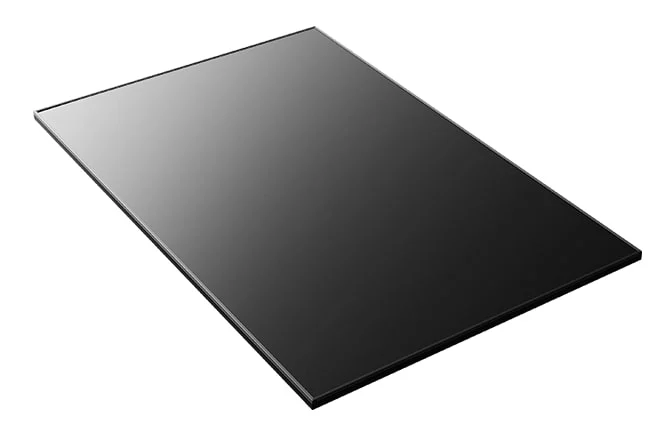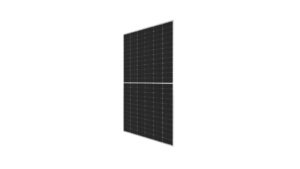- LONGi has unveiled its latest ultra-black double-glass module under the Hi-MO X6 family portfolio, eyeing the DG market
- The latest ultra-black HPBC technology-based module boasts 445 W power and 22.3% maximum efficiency
- The low-reflective textured cell-based module’s 360° black aesthetic enhances the module’s appeal
On June 19, 2024, an ardent believer of back-contact cell technology, LONGi Solar, unveiled its recent addition to the Hi-MO X6 product family at Intersolar Europe 2024. The Hi-MO X6 Artist ultra-black double-glass module is targeted at the distributed generation (DG) segment. This new HPBC (Hybrid Passivated Back Contact) cell-based Artist series module is LONGi’s response to the growing demand for aesthetically pleasing solar modules in Europe’s residential sector, confirms LONGi. The ultra-black module’s special features can be characterized by multiple metrics – aesthetics, safety & reliability, and power.
Aesthetics
The company attributes the 360° black appearance of the new Hi-MO X6 Artist module to 2 main features. Its low-reflective textured-based HPBC black cell reduces incident light reflection with additional light-trapping between the front glass and cell surface, resulting in 1.2% higher light absorption, explains LONGi. Based on the principle of diffuse reflection, the structured glass evenly reflects the incident light that strikes it back multiple times in different directions, creating a black optical effect from all sides. LONGi ensures the optical quality of the new module by implementing a stringent continuous automatic optical inspection (AOI) process that detects different levels of black cells in a particular batch and maintains a predefined standard black for the ultra-black module.
Safety & reliability
Acknowledging the potential risk of rooftop-installed modules in extreme weather event-prone regions, LONGi has tweaked its normal 54-cell-based module design. The company has replaced the 1.6 mm thick front glass with a 2 mm one and upgraded its frame with a non-slip groove design, says the company. The thicker front glass with 56% higher bending stress resistance compared to 1.6 mm glass enhances the module’s maximum wind load carrying capacity to speed above 120 km/h and also heavy snow loads. Regarding the upgraded black non-slip groove frame design, LONGi emphasized improved contact between the clamp and module frame, which enhances the mechanical front load carrying capacity to 6,000 Pa and the back to 3,600 Pa.
LONGi offers 25 years of product and 30 years of performance warranty on the Hi-MO X6 ultra-black modules. The thicker 2 mm front glass reduces the risk of cell microcracks during extreme weather events and the usage of POE as an encapsulation material improves module thermal stability, UV resistance, and corrosion resistance, explains LONGi.
Power
The gridless busbar-free front-side HPBC cell design, in the absence of any shadow, enables increased light absorption by up to 2% compared to a similar TOPCon module, according to the company. This additional absorbed light inside the cell enables a high photovoltaic (PV) conversion efficiency. The company also found that its HPBC technology based module generates up to 1.54% higher power than TOPCon modules in low-light scenarios. The ultra-black Hi-MO X6 Artist module boasts a power range of up to 445 W and an efficiency of up to 22.3%.
All interested visitors can experience LONGi’s latest offerings at booth no. A2.170 from June 19th to 21st.




